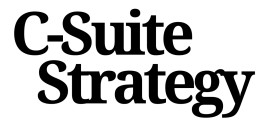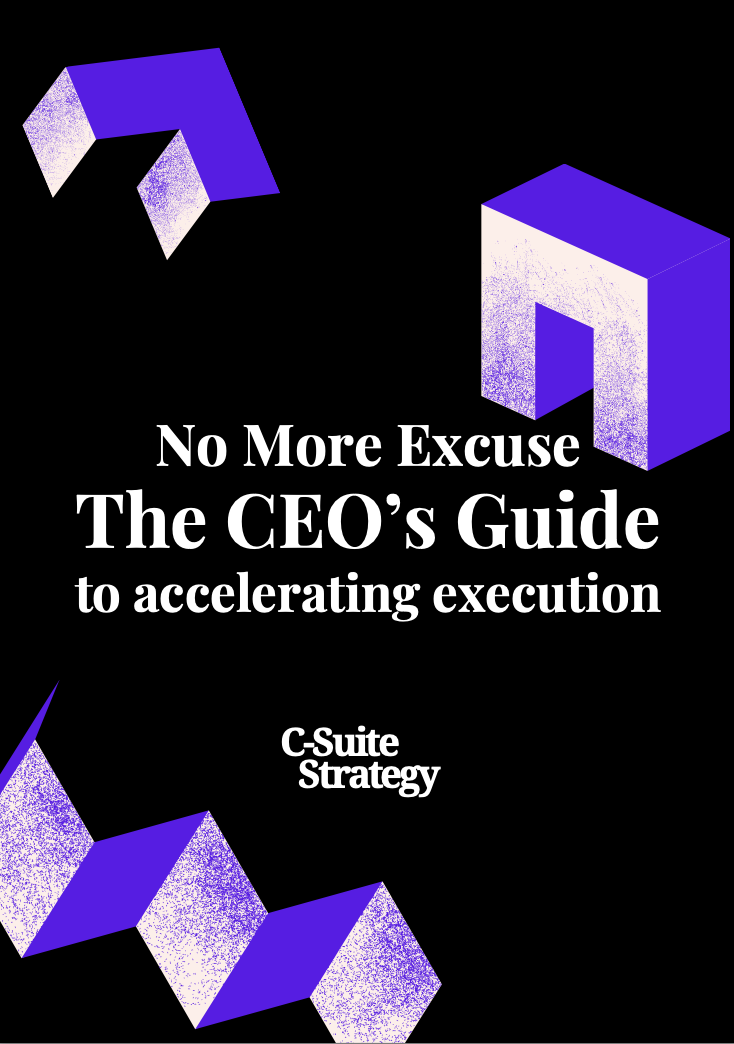
Understanding the Strategic Landscape
Comprehending Today's Strategic Environment
Understanding the current strategic landscape is a vital step in formulating a successful business strategy. The year 2025 presents a complex environment for organizations, characterized by rapid technological advancements, unpredictable economic conditions, and evolving consumer behaviors. This landscape necessitates an informed and agile approach to strategic planning. Organizations need to employ a data-driven mindset to navigate these complexities effectively. Business leaders must focus on gathering and analyzing market data to gain insights into industry trends, competitive positioning, and potential growth opportunities. This intelligence forms the foundation upon which strategic initiatives are built. Having a firm grasp of the present business environment also helps in aligning initiatives with organizational goals. It allows company leaders to set clear objectives that resonate with their overarching mission and vision. Consequently, strategic plans can be tailored to ensure alignment with long-term business goals and foster a sense of shared direction within the organization. As organizations grapple with these dynamics, it's crucial to understand how strategy execution can influence performance. Without a comprehensive understanding of the factors affecting their strategic landscape, companies risk misalignment of strategic initiatives, leading to suboptimal resource allocation and inefficiencies in achieving strategic goals. Through careful strategic planning, businesses will achieve sustainable competitive advantage, ensuring that strategic initiatives are not only well-defined but also effectively executed. This involves routinely assessing the execution against performance indicators to track progress and make necessary adjustments. For more insights on developing a corporate strategy framework that resonates with today's strategic environment, you can explore this corporate strategy framework.Aligning Initiatives with Organizational Goals
Ensuring Initiative Alignment with Broader Goals
For leaders in any organization, aligning strategic initiatives with organizational goals is a cornerstone of successful strategic planning. It demands a nuanced understanding of how individual strategies contribute to overarching business objectives and drive sustainable growth.
In this critical phase of strategy execution, it's crucial to translate long-term plans into actionable initiatives. The emphasis is on creating a coherent framework where each strategic action harmonizes with your company's goals. This alignment not only clarifies resource allocation but also enhances performance management, facilitating a more effective planning process.
The organizational focus should remain on fostering employee engagement by clearly communicating how specific initiatives are pivotal in achieving broader business strategy. Teams that understand the larger context will be more adept at adapting their strategies to meet changing demands while staying on course.
Further, integrating data-driven decision making ensures that initiatives not only align with the business's aspirations but are also informed by concrete performance indicators. This alignment serves as a foundation for evaluating both strategic initiatives and the overall progress towards business goals.
Embracing such structured approaches ensures that strategic excellence remains attainable. The connection between high-level goals and specific initiatives should be continually assessed to adapt afresh to the evolving strategic landscape of 2025 and beyond.
Prioritizing Innovation and Technology
Embracing Innovation and Leveraging Technology for Strategic Growth
In the rapidly evolving business landscape, fostering innovation and embracing technology are pivotal for any company determined to remain competitive and achieve long-term objectives. The digital transformation journey is an essential part of strategic planning, driving new ways to achieve organizational goals and enhancing overall business performance. To effectively prioritize innovation and technology, here's what leaders should consider:- Aligning Innovation with Strategic Objectives: Your strategic initiatives must not only emphasize the use of cutting-edge technology but also align with the organization's overarching strategic goals. This alignment ensures that technological investments contribute directly to the company’s growth and enhance overall strategy execution.
- Involving Key Stakeholders: Successful innovation requires collaboration across various departments and functions within the organization. Engaging strategic partners and cross-functional teams ensures that innovative ideas are not only proposed but are critically evaluated for practical application and sustained impact.
- Implementing a Data-Driven Approach: Companies need to integrate a data-driven decision-making process that provides actionable insights. This involves leveraging data analytics to track progress and measure the effectiveness of their strategic plans, which can significantly enhance resource allocation and performance management.
- Supporting a Culture of Continuous Improvement: Promote a resilient organizational culture that embraces change and encourages team members to innovate. Employee engagement is crucial to cultivating an environment that fosters creativity and the effective implementation of new technologies.
- Investing in Emerging Technologies: As part of the business strategy, investing in emerging technologies like AI, machine learning, and IoT can propel organizations toward achieving a competitive edge. Innovative technologies should be seen as strategic partners that facilitate business goals and lead to substantial growth.
Building a Resilient Organizational Culture
Fortifying Your Culture for the Road Ahead
In a constantly evolving business environment, fostering a resilient organizational culture remains pivotal for executives aiming to strengthen their strategic initiatives. A resilient culture not only supports the achievement of strategic goals but also ensures that the company is flexible enough to adapt to challenges as they arise. To build a resilient culture within your organization, consider the following:- Clear Communication of Objectives: Ensure that strategic goals are transparent and well-communicated across all levels of the company. This clarity helps align team initiatives with the overarching business plan, encouraging collective focus on common objectives.
- Employee Engagement: Actively engage employees in strategic planning and decision-making processes. This involvement enhances their commitment to organizational goals and fosters a sense of ownership, which is critical for long-term strategic success.
- Continuous Learning: Encourage ongoing learning and development to keep teams resilient in the face of changing business dynamics. This approach not only prepares your employees for unforeseen challenges but also fosters an environment where innovation can thrive.
- Recognition and Reward Systems: Implement performance management strategies that recognize and reward employees' contributions to strategic initiatives. This can boost morale and motivation, driving better performance and helping the organization meet its strategic targets.
Measuring Success and Impact
Evaluating Success and Influence through Data-Driven Insights
In any strategic plan, precise measurement of success is paramount. The evaluation phase requires organizations to implement a performance management system that not only tracks progress but also identifies areas for improvement. Leveraging data-driven insights enables companies to align their strategic goals with measurable outcomes, ensuring long-term growth and sustainability. To achieve this, consider the following strategies:- Establish Clear Performance Indicators: By defining specific performance indicators, organizations can quantitatively assess their strategic initiatives. This approach provides a structured method for measuring goal attainment and informs decision-making processes.
- Resource Allocation and Objective Prioritization: Strategic initiatives often compete for resources. Effective performance measurement involves analyzing which objectives align best with the company’s vision. This ensures optimal resource allocation and promotes strategic initiative alignment.
- Continual Strategy Review: Regularly reviewing and adjusting the strategic plan is essential. This can aid in understanding the ever-changing business landscape and adapting strategies accordingly. By systematically evaluating progress, organizations can make informed decisions that enhance strategic execution.
- Engage the Team with Transparent Communication: Keeping the team informed about the organization’s strategic goals fosters employee engagement. When employees comprehend the importance of their roles in reaching business goals, it naturally leads to improved performance.
- Partner with Strategic Allies: Collaborating with strategic partners can provide external expertise and additional insights that enrich performance evaluations. This collaboration can offer new perspectives and facilitate innovative solutions.
Adapting to Future Challenges
Embracing the Fluidity of Change
As the strategic landscape evolves, it is essential for organizations to adapt to future challenges with agility and foresight. Changes in technology, market dynamics, and consumer behavior require a proactive approach to strategic planning. By staying ahead of trends and anticipating shifts, companies can position themselves to respond effectively and strategically.
One key aspect of adaptation involves integrating data-driven decision making into the strategic process. Leveraging analytics and performance indicators helps track progress and refine strategic goals. By assessing current strategies against real-time data, businesses can make informed adjustments to their strategic plans in order to meet business goals and objectives.
Incorporating flexibility into resource allocation and management processes can further enhance a company’s ability to pivot when necessary. Optimization of resource allocation ensures that strategic initiatives are supported adequately, allowing organizations to seize opportunities and manage risks efficiently.
Employee engagement plays a critical role in adapting to future challenges. A resilient organizational culture that encourages innovation and collaboration can help teams embrace change and contribute to the company’s growth and success. Nurturing a workforce that is ready to evolve with changing business environments equips the organization to maintain its competitive edge.
Finally, resilience is built through ongoing monitoring and adaptation. Regularly revisiting strategic objectives and adjusting strategies ensures the business remains aligned with long-term goals while being responsive to immediate challenges. This iterative approach fosters continuous improvement and sustainable performance.














